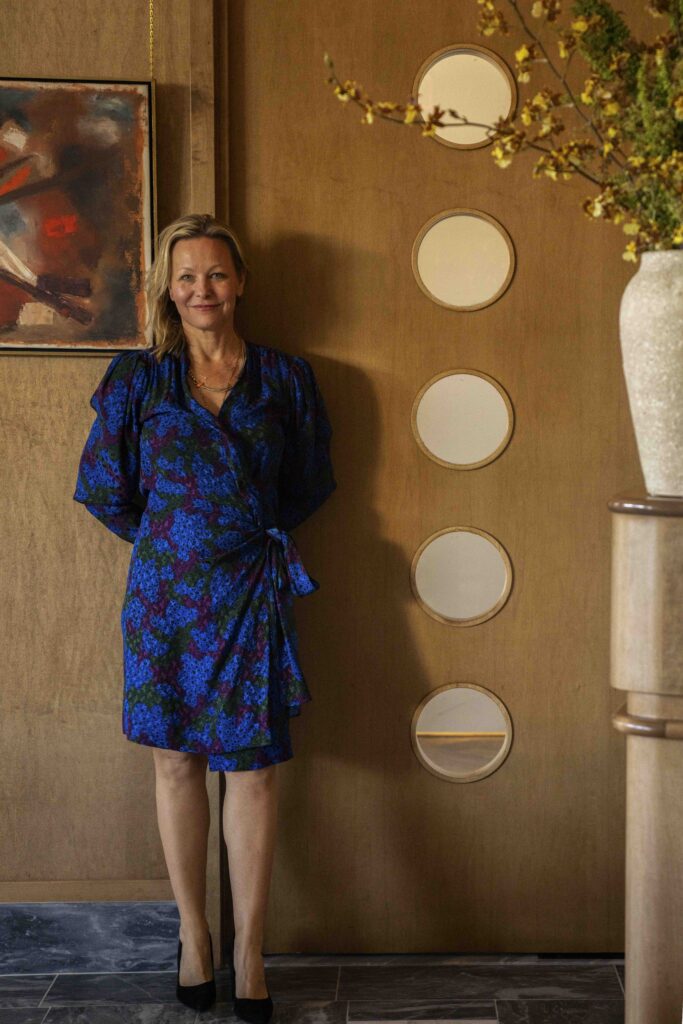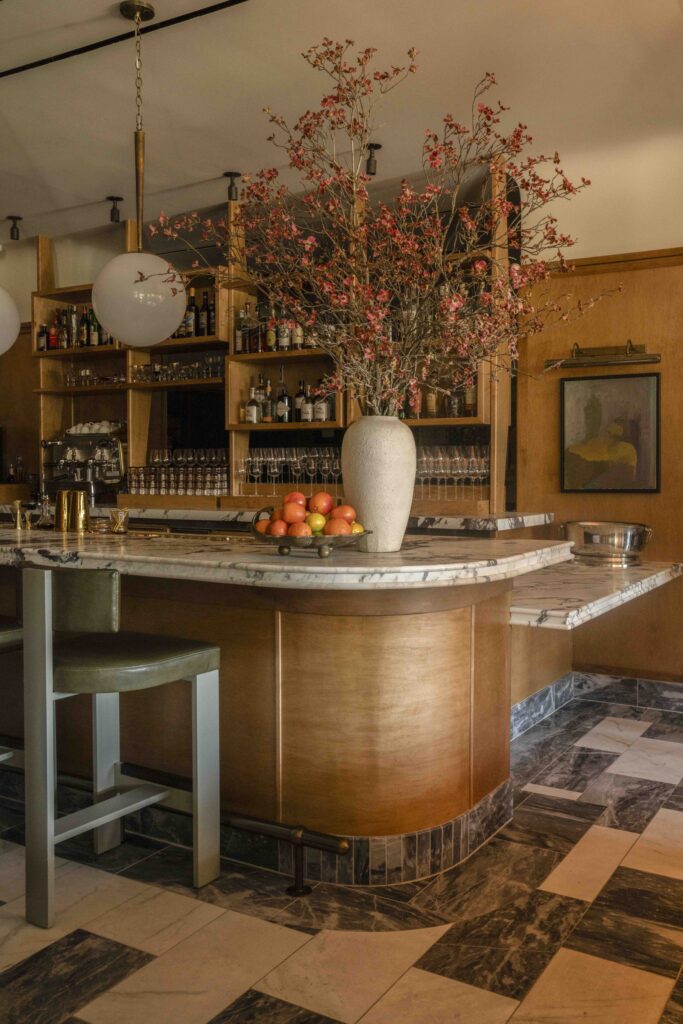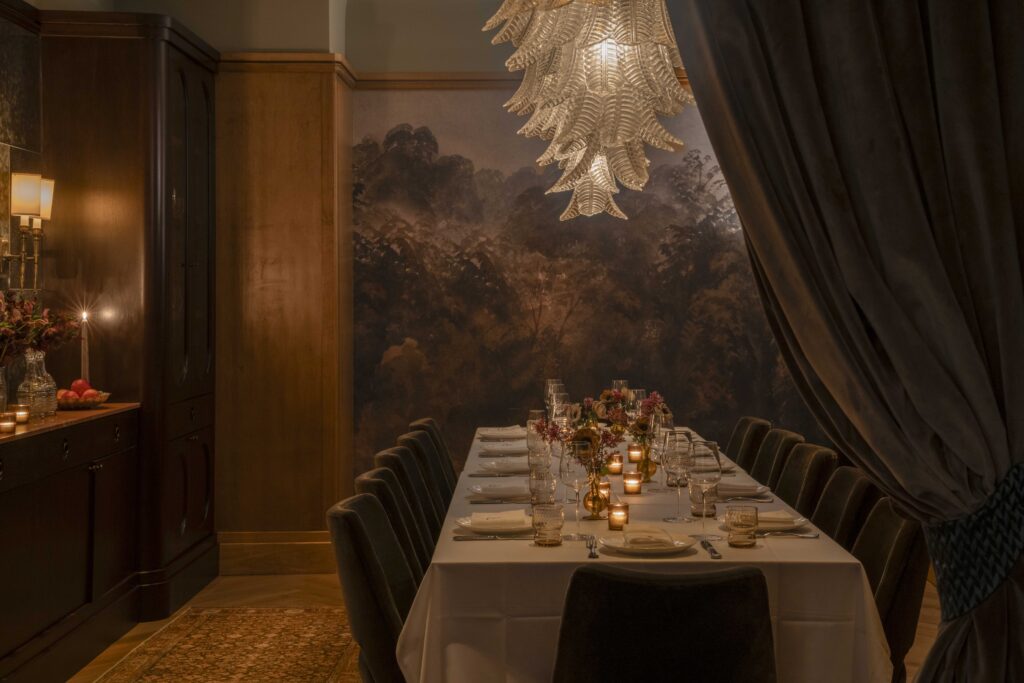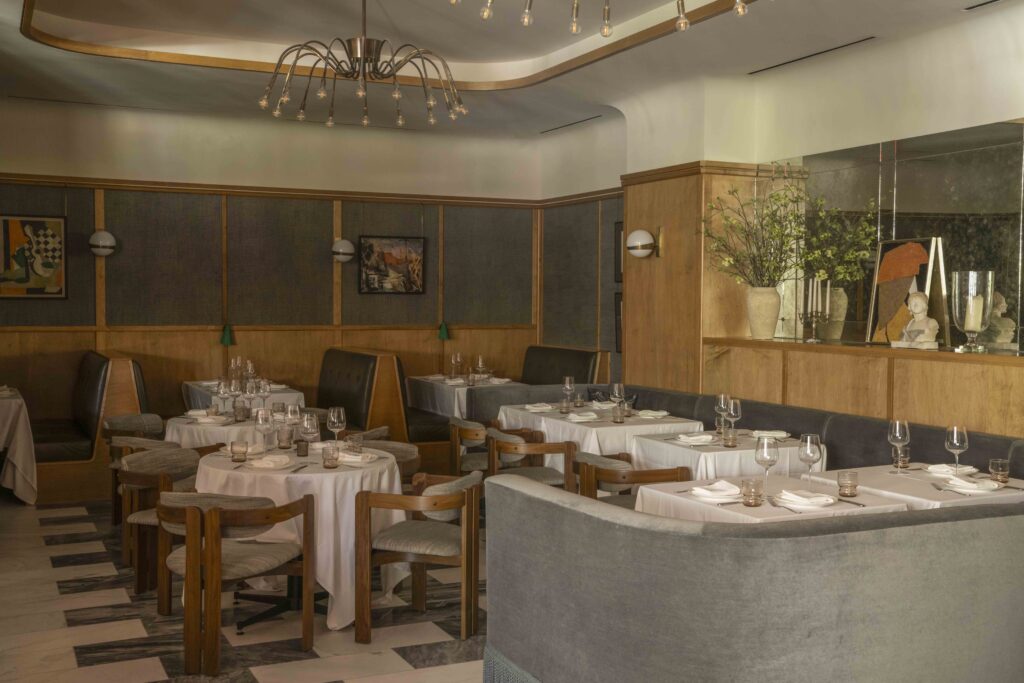The Brightest Star
Author:Lindsey ShookWendy Haworth Studio infuses West Hollywood’s newest destination for Italian food with mid-century soul

Photos by Kort Havens, styled by Scott Horne.
Located in a section of Beverly Boulevard that isn’t known for being boisterous like the rest of West Hollywood, Stella is the neighborhood’s newest Italian eatery that is changing the narrative. The two-story restaurant, which is helmed by veteran chef Rob Gentile from Toronto and successful restaurateur Janet Zuccarini, has quickly become the destination where Angelenos can enjoy classic Italian style and fare.
Zuccarini turned to designer, friend and collaborator Wendy Haworth—who she worked with on her other restaurant, Felix, and her own home—to put the shine on her latest star, Stella. “We believe West Hollywood needs more chic institutions where people can meet up, and so our vision for Stella was to design a program that offers various experiences for all types of dining moments,” Haworth notes. “It’s simultaneously a fine-dining establishment and a local watering hole, depending on how you enter the space.”

Photos by Kort Havens, styled by Scott Horne.
When entering the upper entrance, guests are greeted with a light-filled dining room that is perfect for formal affairs; when they arrive through the subterranean access, they experience a moodier, action-packed energy. Taking cues from Chef Gentile’s menu, the design plays the supporting role. “It shouldn’t take your attention away from the food; it should keep you in the moment. Design should enhance the experience by making the diner feel comfortable and insulated,” Haworth says. “When you go to a restaurant with a sea of tables and nothing to break them up, you can feel like you’re exposed on these little islands, and it’s distracting.”
From the outset, Zuccarini and Haworth settled on a mid-century-inspired direction. “Janet understands that my approach to hospitality design is to build bespoke worlds. I’m a culture enthusiast, and I love working across eras to create historically informed spaces with character- making objects,” Haworth proclaims. “We added more antique and contemporary pieces and elements to give it a feeling of a palazzo passed down through generations. We wanted to create a restaurant that felt like it had been there forever.”

Photos by Kort Havens, styled by Scott Horne.
Haworth and her team paid tribute to several iconic Italian designers including Piero Portaluppi, Ico Parisi, Gio Ponti, Carlo Scarpa and Osvaldo Borsani. Natural materials seen at a 1950s Milanese building inspired the custom marble floors, countertops and maple paneling found on the upper level, while antique lighting, including 1970s Murano leaf chandeliers, support Haworth’s belief that patina is good. “We see beauty in the imperfect, the worn and the aged while appreciating craftsmanship and heritage,” she says.
On the lower level, custom striped terrazzo floors and walnut paneling lead to an open kitchen and a glass-enclosed pasta room that allows guests to form a deep bond with the chef and the pasta-making process. “We wanted the upper-level private dining room to feel like a luxurious yet comfortable space, akin to your chic friend’s Milanese palazzo,” Haworth says. “The lower-level room is a bit more grotto- like, with the wine storage and cheeky Carlo Mollino Polaroid prints.”




 Guests find warmth in the upstairs dining room, from the wood-clad walls to the layered antiques, art and objects.
Guests find warmth in the upstairs dining room, from the wood-clad walls to the layered antiques, art and objects.